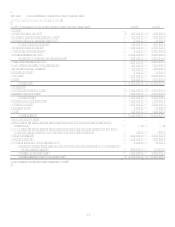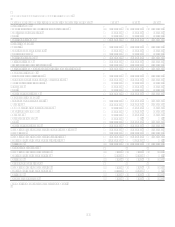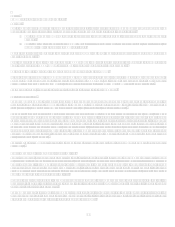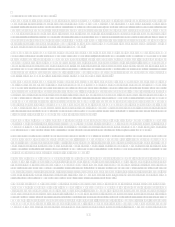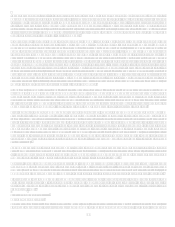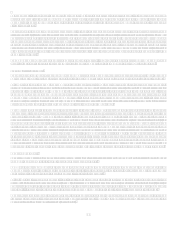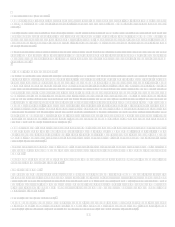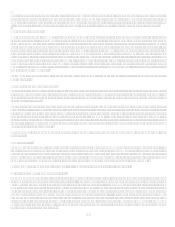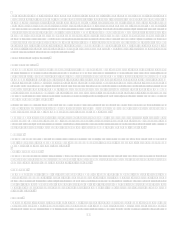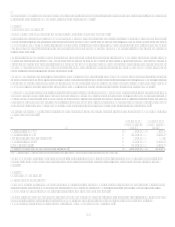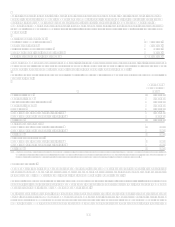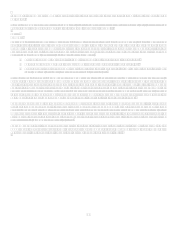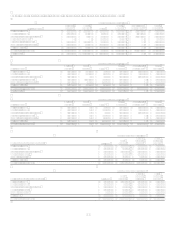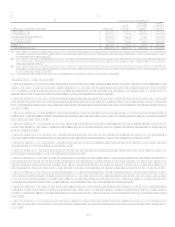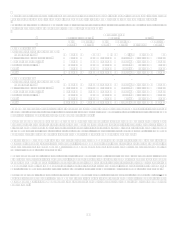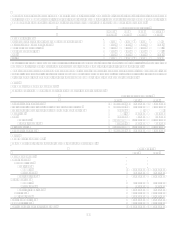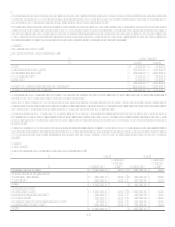Capital One 2007 Annual Report Download - page 94
Download and view the complete annual report
Please find page 94 of the 2007 Capital One annual report below. You can navigate through the pages in the report by either clicking on the pages listed below, or by using the keyword search tool below to find specific information within the annual report.72
Other intangible assets that have finite useful lives are amortized either on a straight-line or on an accelerated basis over their
respective estimated useful lives and evaluated for impairment whenever events or changes in circumstances indicate the carrying
amount of the assets may not be recoverable. At December 31, 2007 and 2006, net intangible assets included in other assets of $1.1
billion and $1.3 billion, respectively, consist of core deposit intangibles, trust intangibles, lease intangibles and other intangibles.
Mortgage Servicing Rights
Mortgage Servicing Rights (MSRs), are recognized when mortgage loans are sold in the secondary market and the right to service
these loans for a fee is retained. MSRs are carried at fair value with changes in fair value recognized in mortgage servicing and other
income. The Company continues to operate the mortgage servicing business and to report the changes in the fair value of MSRs in
continuing operations. To evaluate and measure fair value, the underlying loans are stratified based on certain risk characteristics,
including loan type, note rate and investor servicing requirements. Fair value of the MSRs is determined using the present value of the
estimated future cash flows of net servicing income. The Company uses assumptions in the valuation model that market participants
use when estimating future net servicing income, including prepayment speeds, discount rates, default rates, cost to service, escrow
account earnings, contractual servicing fee income, ancillary income and late fees. This model is highly sensitive to changes in certain
assumptions. Different anticipated prepayment speeds, in particular, can result in substantial changes in the estimated fair value of
MSRs. If actual prepayment experience differs from the anticipated rates used in the Companys model, this difference could result in
a material change in MSR value.
The MSR balance was $247.6 million and $252.3 million at December 31, 2007 and 2006, respectively. See Notes 2 and 19 for
additional detail.
Representation and Warranty Reserve
The representation and warranty reserve is available to cover probable losses inherent with the sale of loans in the secondary market.
In the normal course of business, certain representations and warranties are made to investors at the time of sale, which permit the
investor to return the loan to the seller or require the seller to indemnify the investor for any losses incurred by the investor while the
loan remains outstanding.
The evaluation process for determining the adequacy of the representation and warranty reserve and the periodic provisioning for
estimated losses is performed for each product type on a quarterly basis. Factors considered in the evaluation process include historical
sales volumes, aggregate repurchase and indemnification activity and actual losses incurred. Additions to the reserve are recorded as a
reduction to the gain on sale of loans. Losses incurred on loans that the Company is required to either repurchase or make payments to
the investor under the indemnification provisions are charged against the reserve. The representation and warranty reserve is included
in other liabilities. Quarterly changes to the representation and warranty reserve related to GreenPoint are reported as discontinued
operations for all periods presented.
As of December 31, 2007 and 2006, the representation and warranty reserve balance was $93.4 million and $156.0 million,
respectively.
Rewards Liability
The Company offers products, primarily credit cards, that provide reward program members with various rewards such as airline
tickets, free or deeply discounted products or cash rebates, based on account activity. The Company establishes a rewards liability
based upon points earned which are ultimately expected to be redeemed and the average cost per point redemption. As points are
redeemed, the rewards liability is relieved. The estimated cost of reward programs is primarily reflected as a reduction to interchange
income. The cost of reward programs related to securitized loans is deducted from servicing and securitizations income.
As of December 31, 2007 and 2006, the rewards liability was $1.3 billion and $1.1 billion, respectively.
Derivative Instruments and Hedging Activities
The Company recognizes all of its derivative instruments as either assets or liabilities in the balance sheet at fair value. These
instruments are recorded in other assets or other liabilities on the Consolidated Balance Sheet and in the operating section of the
Statement of Cash Flows as increases (decreases) of other assets and other liabilities. The Companys policy is not to offset fair value
amounts recognized for derivative instruments and fair value amounts recognized for the right to reclaim cash collateral or the
obligation to return cash collateral arising from derivative instruments recognized at fair value executed with the same counterparty
under master netting arrangements. The accounting for changes in the fair value (i.e., gains and losses) of a derivative instrument
depends on whether it has been designated and qualifies as part of a hedging relationship and, further, on the type of hedging
relationship. For those derivative instruments that are designated and qualify as hedging instruments under SFAS 133, the Company
must designate the hedging instrument, based upon the exposure being hedged, as a fair value hedge, a cash flow hedge or a hedge of
a net investment in a foreign operation.


